
Ahmad Bin Ali Stadium of Al Rayyan with a capacity 40,000 seats.
Doha: With exactly one year to go until the first FIFA World Cup in the Middle East and Arab world, Qatar has proudly completed construction work at all eight tournament venues.
The finishing touches were recently applied to Lusail Stadium - the 80,000-capacity venue that will host next year’s final on 18 December.
Lusail is one of seven venues to have been built from scratch, while Khalifa International Stadium was extensively redeveloped in preparation for the 22nd edition of football’s flagship international tournament.
The 40,000-seat Khalifa International Stadium was the first tournament-ready venue for Qatar 2022, Khalifa International has a long history of hosting major sporting events since 1976. Serving as Qatar’s national stadium, the venue underwent extensive redevelopment in order to prepare it for the FIFA World Cup. This included the addition of a new tier that added 12,000 seats to the capacity and a new facade. A new LED lighting system adds a new dimension to the fan experience.
The redeveloped stadium was inaugurated on 19 May 2017 when it hosted H H the 45th Amir Cup final.
The stadium will host eight matches up to and including the third-place play-off.
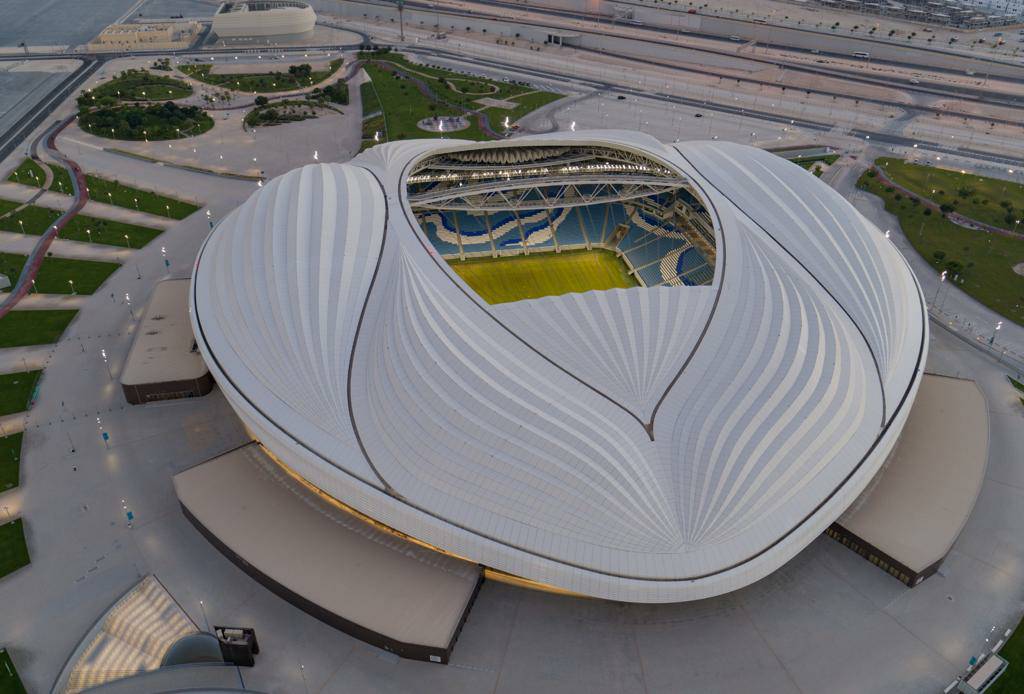
Located in Al Wakrah, the 40,000-seat Al Janoub Stadium was the first Qatar 2022 venue to be built from scratch. The stadium’s design is inspired by the sails of traditional dhow boats, in tribute to Al Wakrah’s seafaring past. Built with an innovative cooling system and retractable roof, the venue can be used all year round.
Designed by AECOM and Zaha Hadid Architects, the stadium was inaugurated on 16 May 2019 when it hosted the 47th Amir Cup final.
Al Janoub staged several matches during the 2020 AFC Champions League, including the final on 19 December 2020.
In the FIFA Arab Cup Qatar 2021, The stadium will host six matches up to the quarter-finals stage.
Al Janoub will stage seven matches up to the round of 16 stage of the 2022 FIFA World Cup.
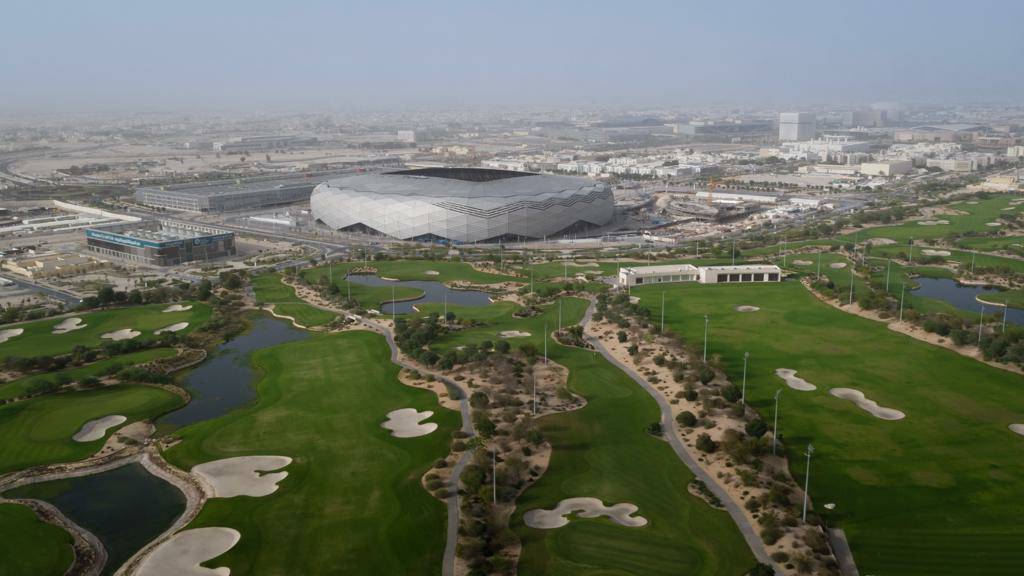
Located in Education City, home of Qatar Foundation, the 40,000-seat Education City Stadium’s facade features triangles that form complex, diamond-like geometrical patterns which appear to change colour with the sun’s movement across the sky. Like diamonds, the stadium’s design represents quality, durability and resilience. The ‘Diamond in the Desert’ was also the first Qatar 2022 tournament venue to achieve a five-star design and build rating from the Global Sustainability Assessment System.
Designed by Fenwick Iribarren Architects, the stadium was inaugurated in June 2020 through a specially-programmed digital launch as a tribute to frontline healthcare workers during the COVID-19 pandemic.
The stadium hosted matches in the 2020 AFC Champions League and four games during the FIFA Club World Cup Qatar 2020, including the final on 11 February 2021.
In the FIFA Arab Cup Qatar 2021, the stadium will host five matches up to the quarter-finals stage.
Education City will stage eight matches up to the quarter-finals stage in the 2022 World Cup.
The 40,000-seat Ahmad Bin Ali Stadium is located in the city of Al Rayyan. The stadium was built on the site of the old venue - also named Ahmad Bin Ali Stadium - with many of the materials from the deconstructed venue being used in the new project. The stadium’s most striking feature is a glowing façade, comprised of patterns that characterize different aspects of the country: the importance of family, the beauty of the desert, native flora and fauna, and local and international trade.
Designed by Ramboll, the stadium was inaugurated on 18 December 2020 when it hosted HH the 48th Amir Cup final.
The stadium hosted three matches during the FIFA Club World Cup Qatar 2020 in February 2021.
In the FIFA Arab Cup Qatar 2021, the stadium will host four matches during the group stage.
The stadium will host seven matches up to the round of 16 stage during the 2022 FIFA World Cup.
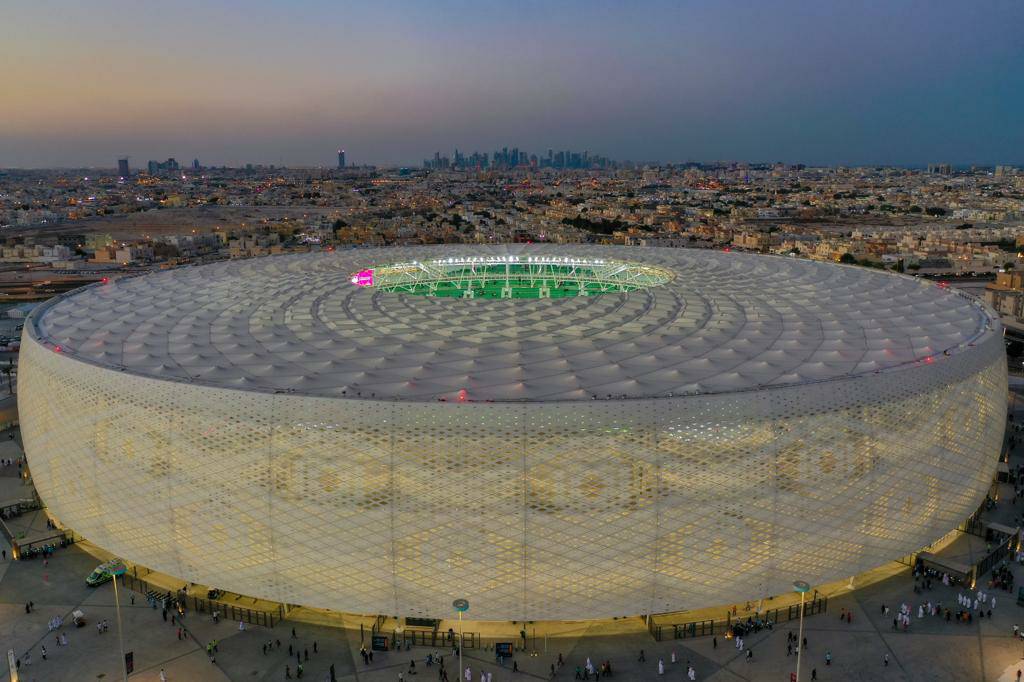
The 40,000-seat Al Thumama Stadium is designed by Qatari architect Ibrahim Al Jaidah.
Al Jaidah’s inspiration for the design of Al Thumama Stadium was the ‘gahfiya’ - a traditional woven cap worn by men and boys across the Middle East. The gahfiya forms a fundamental layer of the traditional clothing of the region. It is also a symbol of dignity and independence. In May 2018, the venue’s design won the MIPIM/The Architectural Review Future Project Award.
Al Thumama was inaugurated on 22 October 2021 when it hosted HH the 49th Amir Cup final.
FIFA Arab Cup Qatar 2021, the stadium will host six matches up to the semi-finals stage.
Al Thumama will stage eight matches up to the quarter-finals of the 2022 World Cup.
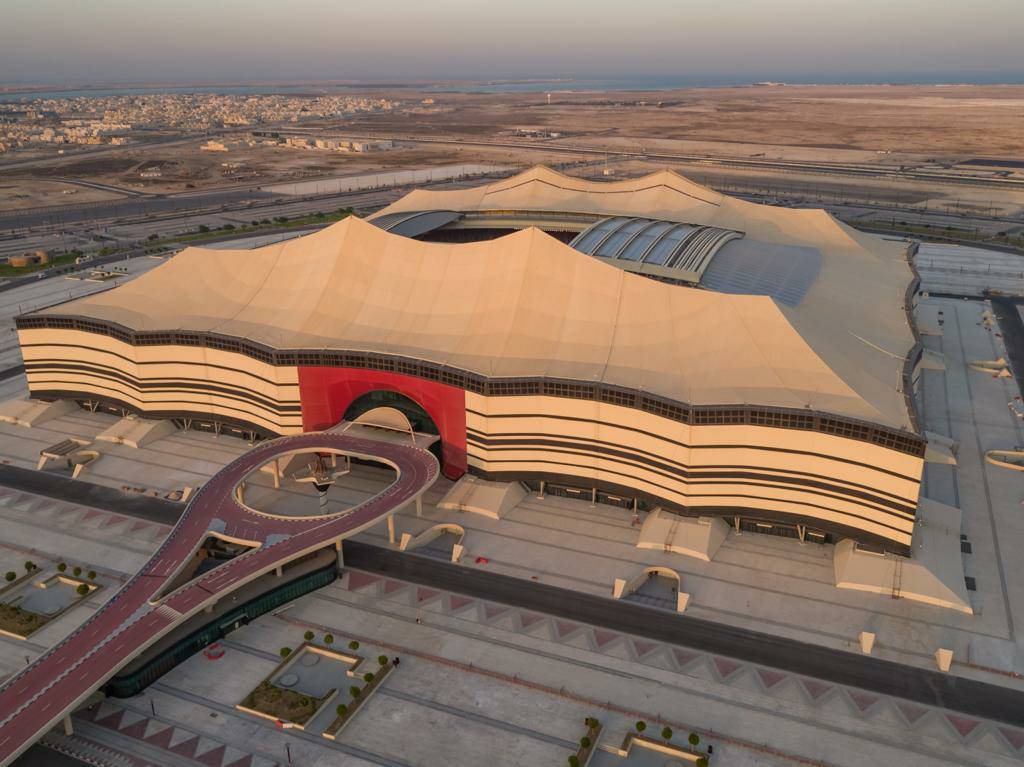
Located in Al Khor, the spectacular 60,000-seat Al Bayt Stadium takes its inspiration from ‘bayt al sha’ar’ which were tents historically used by nomadic peoples in Qatar and the Gulf region. The design honors Qatar’s past and present, while keeping one eye on the future of the community. The stadium precinct includes the vast Al Bayt Park, which opened in February 2020.
Designed by Dar Al-Handasah, the stadium will be inaugurated on 30 November during the opening day of the FIFA Arab Cup Qatar 2021 when it hosts the match between Qatar and Bahrain In the FIFA Arab Cup Qatar 2021, the stadium will host five matches, including the final on 18 December.
In the 2022 World Cup, Al Bayt will stage nine matches up to the semi-finals stage. This includes the opening match of the tournament.
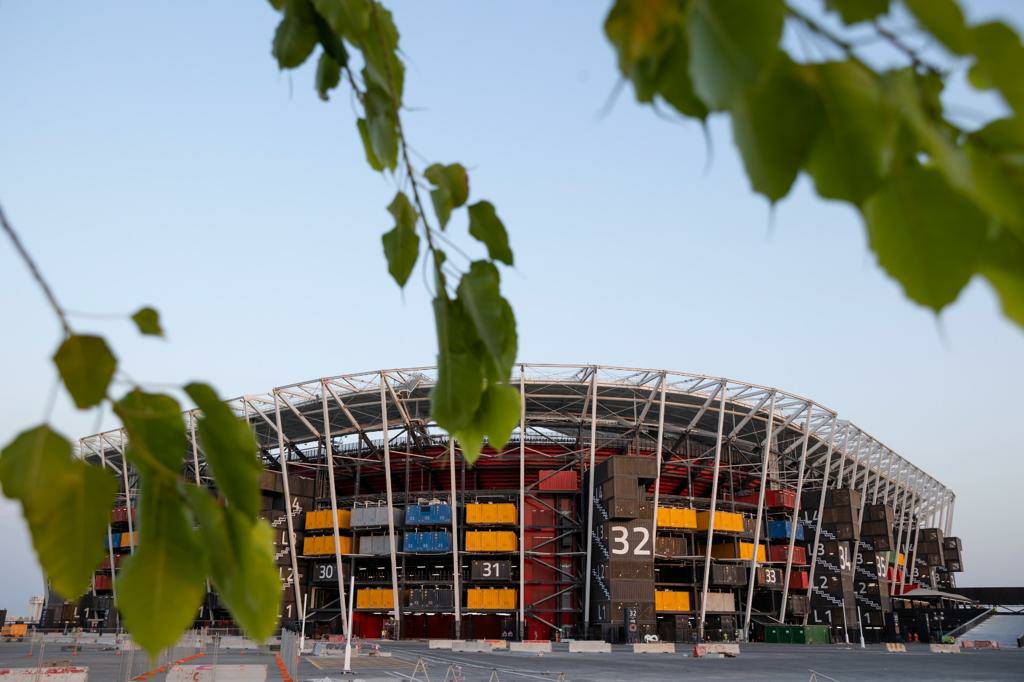
Built using modified shipping containers and modular steel elements, the 40,000-seat Stadium 974 is the first fully demountable stadium in FIFA World Cup history. The design is inspired by Doha’s character and history as a major port city on the Arabian Gulf. 974 is the number of shipping containers used in the development and also Qatar’s international dialling code.
Designed by Fenwick Iribarren Architects, the stadium was unveiled during a digital launch on 20 November 2021 and will hold its first match on the opening day of the FIFA Arab Cup Qatar 2021 when the United Arab Emirates play Syria on 30 November 2021.
The stadium will host six matches, including the third-place play-off of the FIFA Arab Cup Qatar 2021.
During the 2022 World Cup, 974 will stage seven matches up to the round of 16 stage.
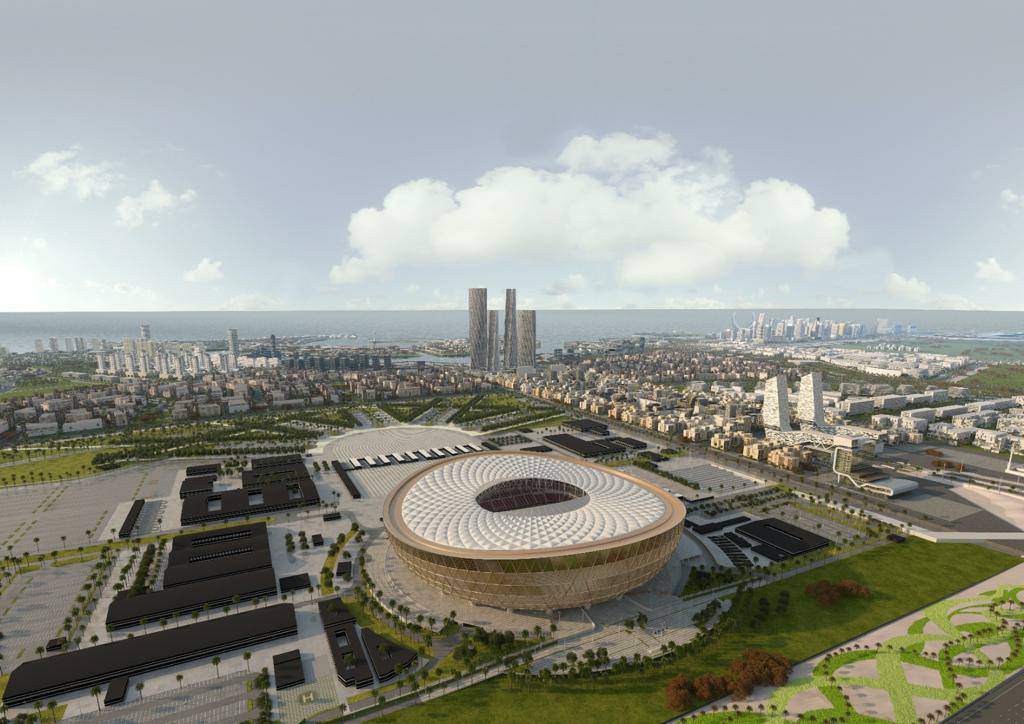
Located in Lusail City, the 80,000-seat Lusail Stadium is Qatar’s largest tournament venue. The design is inspired by the interplay of light and shadow that characterizes the ‘fanar’ lantern. Lusail’s shape and facade echo the intricate decorative motifs on bowls and other vessels characteristic of the golden age of art and craftsmanship in the Arab and Islamic world.
Designed by Foster + Partners, the stadium has been completed and will be inaugurated in 2022.




